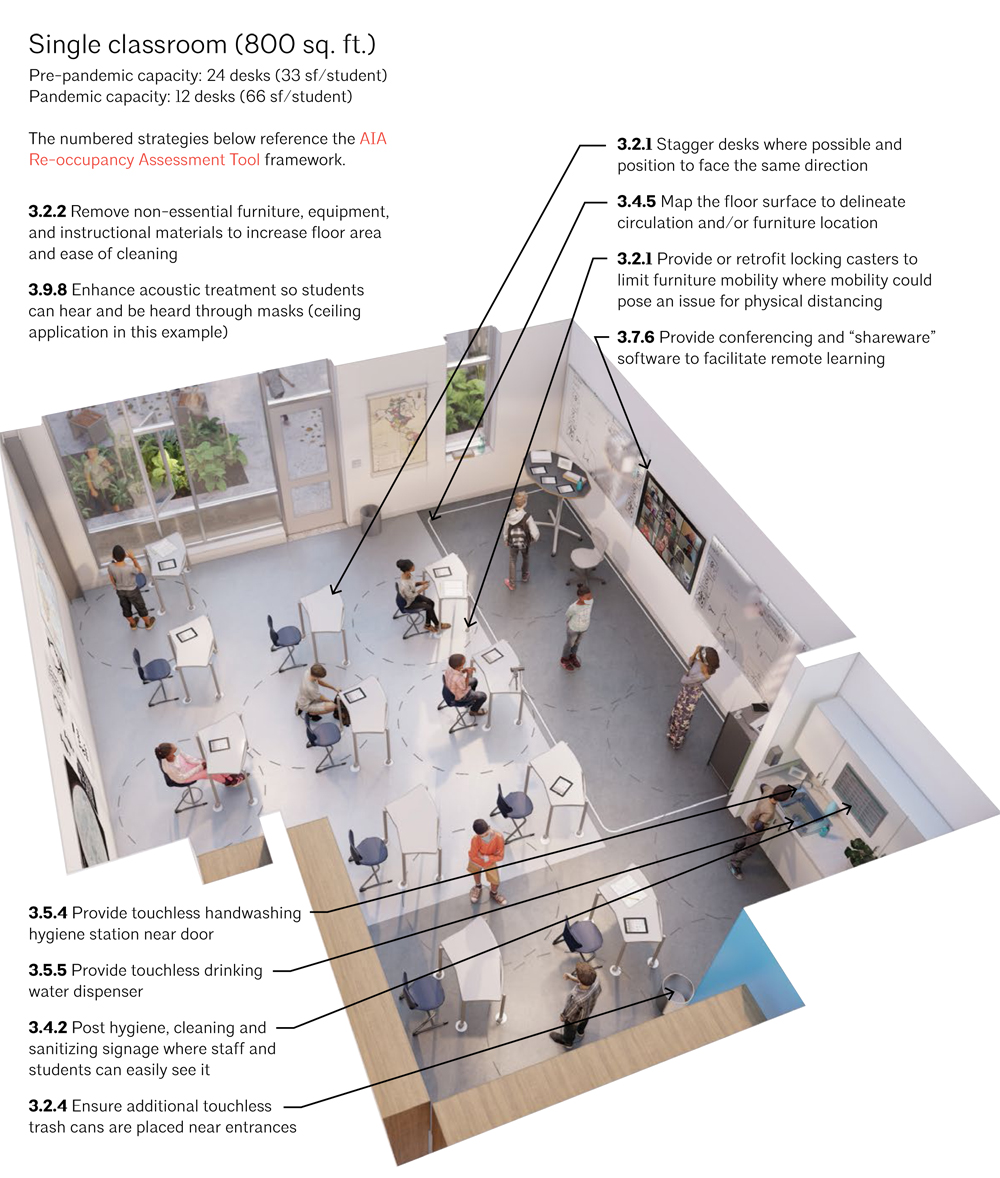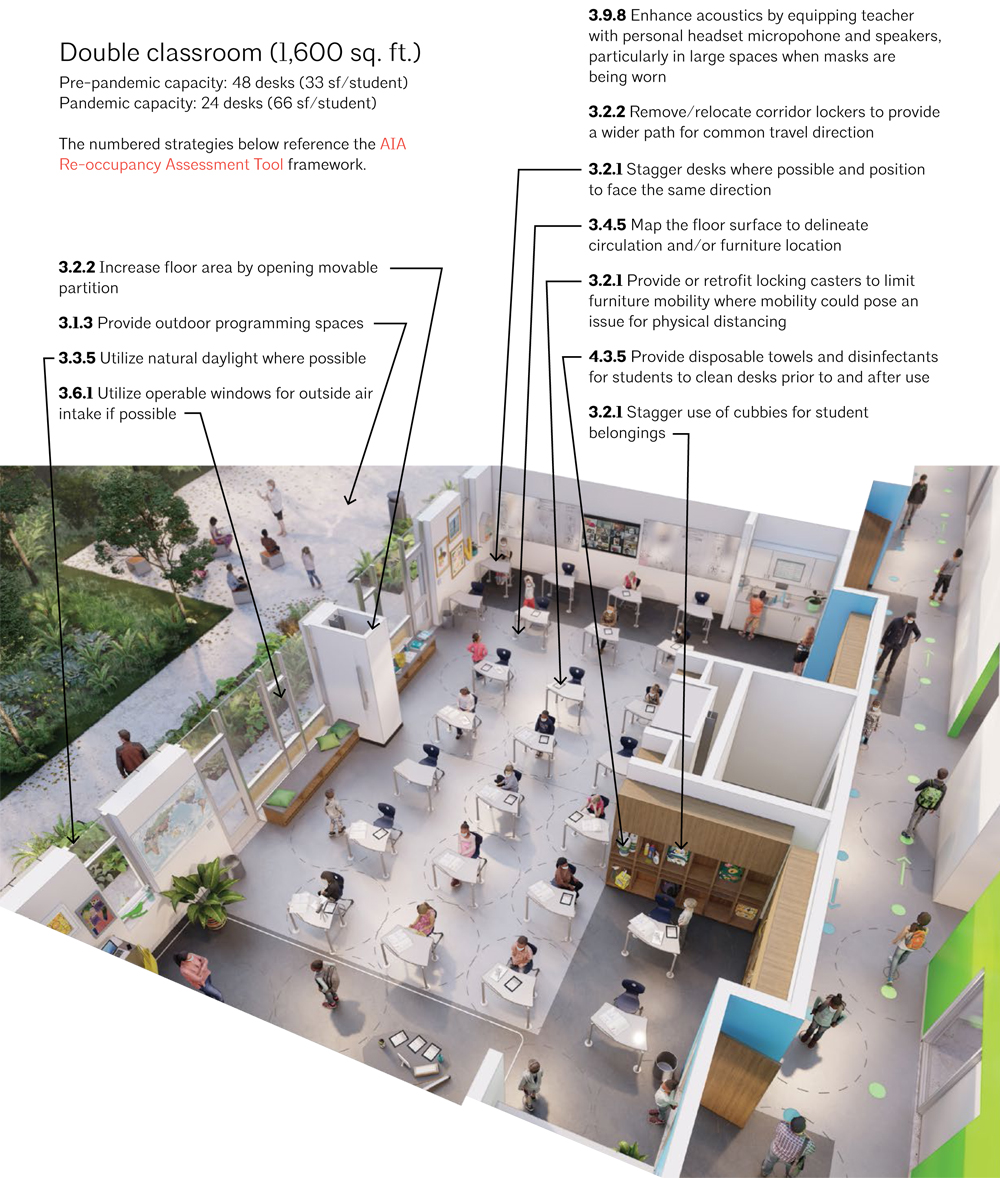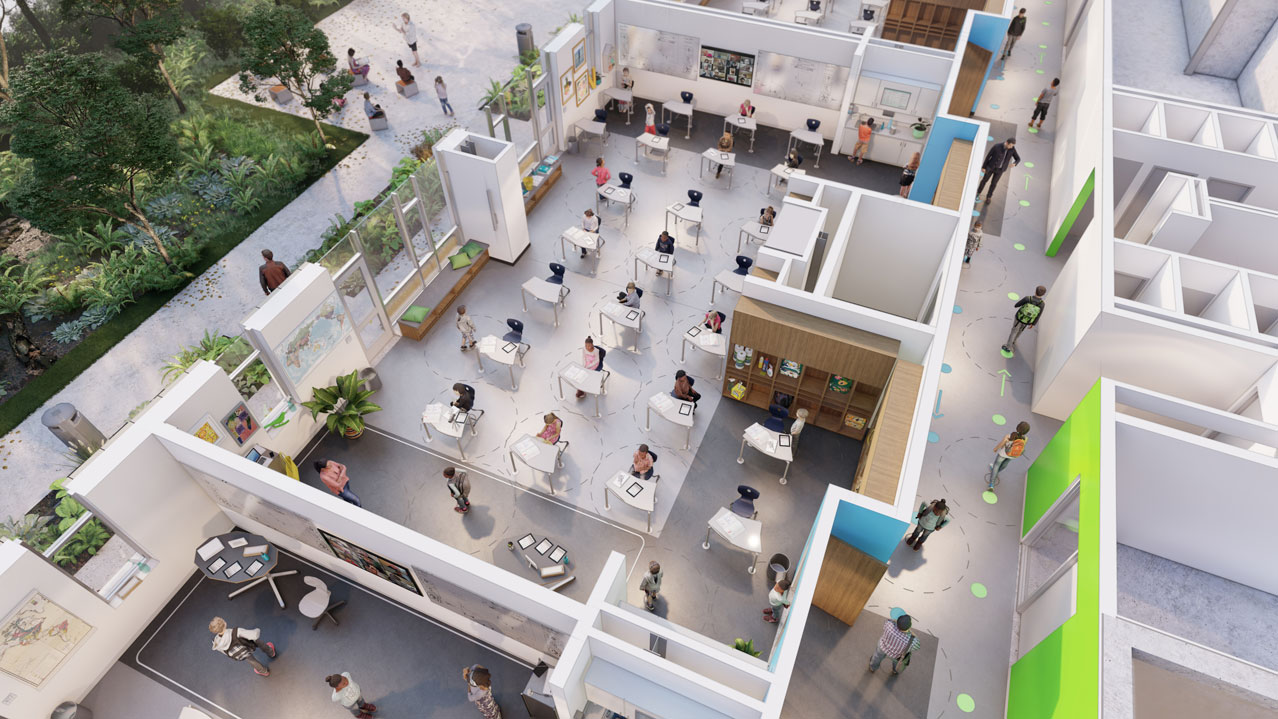School districts across the country are facing the difficult task of determining if K-12 schools will reopen this fall. In an effort to support the health, safety, and well-being of students, the American Institute of Architects (AIA) has released Strategies for Safer Schools that can assist education officials with reopening schools during the pandemic.
A team of VMDO designers – including designer Sarah Lutze, Director of Visualization Thomas Bates, Director of Sustainability Michelle Amt, and Principal Kelly Callahan – collaborated with the AIA in developing 3D models (see Single Classroom and Double Classroom options below) that illustrate strategies for reducing the transmission of COVID-19 in schools. This design work was supported by VMDO Design Corps, the firm's pro bono arm, to assist the AIA in their “Reopening America" initiative to make buildings safer for re-entry.

Source: "Re-Opening America: Strategies for Safer Schools"
In addition to 3D models illustrating strategies for classrooms and corridors, a broader AIA team – comprised of architects, public health experts, engineers, and facility managers – has developed a report that provides additional considerations for entrances, gymnasiums, assembly spaces, cafeterias, and related spaces. According to the AIA, "the report elaborates on the many factors that need to be taken into consideration when reopening schools and provides basic building blocks that can be adjusted on a case-by-case basis when working with design teams to ensure the needs of individual education facilities are met when adapting buildings for COVID-19."

Source: "Re-Opening America: Strategies for Safer Schools"
Findings in the report are meant to work in tandem with tools that can assist education officials with preparing schools for reopening, including a seven-step Risk Management Plan for Buildings and the AIA’s Re-occupancy Assessment Tool, both of which provide a framework of strategies for making buildings safer.
Resources leveraged a wide range of expertise through a series of virtual charrettes. As part of the sessions, states the AIA, "a group of public, environmental, and occupational health experts and physicians provided an independently developed 90-minute briefing on SARS-CoV-2 infectious disease transmission, epidemiological models, and insights into the most current research of the virus as of early June. For more detailed information on public health hazards and considerations in schools, see the AIA’s COVID-19 emerging research and public health data."
Read the AIA's press release for more information.

